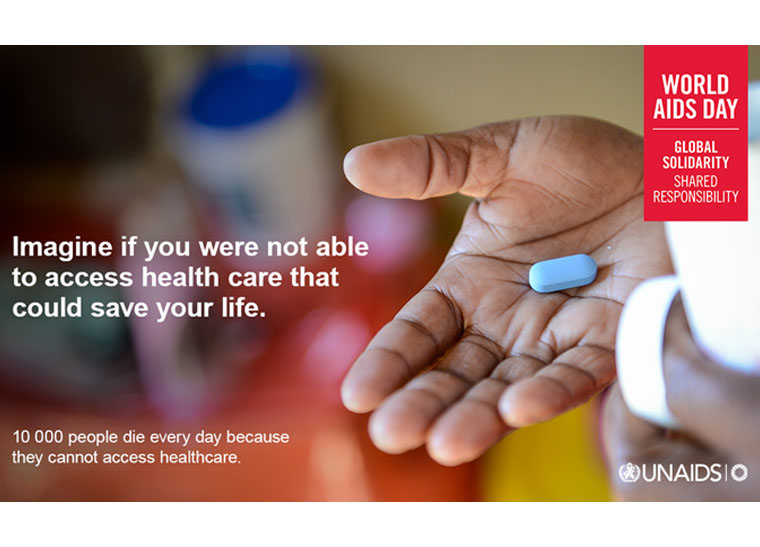World AIDS Day 2021
Join us in prayer on December 1st.
World AIDS Day is held on December 1 each year around the world. It is an opportunity to raise awareness, commemorate those who have died, and celebrate victories such as increased access to treatment and prevention service.
Join the World AIDS Day prayer vigil on December 1
Sign up for a one-hour time slot during the 24-hour vigil at http://maryknollogc.org/aids-day-vigil
The world is threatened by an expanding list of pandemics. As we enter a third year of the COVID-19 pandemic, we also enter the fifth decade of the AIDS pandemic.
The theme for World AIDS Day 2021 is “Ending the HIV Epidemic: Equitable Access, Everyone’s Voice,” highlighting the urgent need to address health inequities and reach underserved populations with HIV services, especially during COVID-19.
There were 37.7 million people living with HIV, the virus that causes AIDS, or “acquired immunodeficiency syndrome,” in 2020.
Since the beginning of the epidemic in 1981, Maryknoll missioners in Asia, Latin America, and Africa have worked in ministries serving persons living with HIV and AIDS. We have accompanied people dying of AIDS, worked with children orphaned by AIDS, supported women and girls who are at risk of violence or sexual abuse, and witnessed the direct impact of debt, trade issues and poverty on societies decimated by AIDS.
Over four decades more than 25 million people have died of AIDS worldwide. The world has responded by committing billions of dollars for research, programs and medicines, and innumerable efforts to change behaviors and lower the number of transmissions. According to the World Health Organization, by the end of 2020, 27.5 million were receiving treatment for HIV, or 73% of people living with the disease.
According to the latest estimates from UNAIDS:
- About 680,000 people died of AIDS-related illnesses in 2020. The numbers are declining; 1.1 million people died of AIDS in 2015. Deaths have declined due in part to antiretroviral treatment (ART) scale-up. HIV remains a leading cause of death worldwide and the second leading cause of death on the African continent.
- There were about 1.5 million new infections in 2020, a decrease by 52% since the peak in 1997. Women and girls accounted for 50% of all new infections in 2020.
- People living with HIV are more vulnerable to COVID-19 than people not living with HIV. Studies from England and South Africa have found that the risk of dying from COVID-19 among people with HIV was double that of the general population.
- Sub-Saharan Africa is home to two thirds (67%) of people living with HIV but only 13% of the world’s population. The COVID-19 vaccines that can protect them are not arriving fast enough. In July 2021, less than 3% of people in Africa had received at least one dose of a COVID-19 vaccine.
- HIV is a leading cause of death among women of reproductive age, especially on the African continent. Gender inequalities, differential access to service, and sexual violence increase women’s vulnerability to HIV, and women, especially younger women, are biologically more susceptible to HIV. Young women aged 15–24 years are twice as likely to be living with HIV than men.
- Globally, there were 1.7 million children living with HIV, 110,000 AIDS-related deaths, and 150,000 new infections among children in 2020. Since 2010, new HIV infections among children have declined by more than 50 percent.
Faith in action:
Learn more about World AIDS Day at https://www.worldaidsday.org/
Join the World AIDS Day prayer vigil on December 1: Sign up for a one-hour time slot during the 24-hour vigil at http://maryknollogc.org/aids-day-vigil
Pray with the Maryknoll AIDS Task Force prayer at http://bit.ly/MaryknollAIDSprayer

